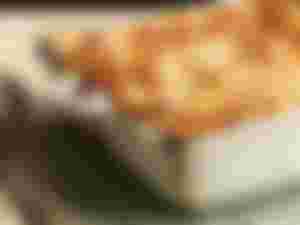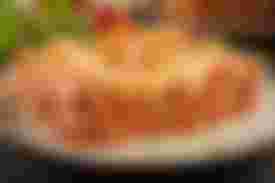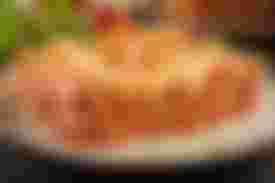Definitely one of the most popular Italian dishes in Serbia. Probably because it belongs to strong food, it is baked in a casserole and you can eat a fair amount from one piece.
Unlike many other recipes of Italian cuisine, lasagna is very caloric and does not belong to healthy food, but it is very tasty. That's how it usually happens…
The Italians believe that today's version of this dish originated in Bologna, but it is true that they only perfected and popularized it, and that in fact the forerunner of "lasagna" is an ancient dish that originates from ancient Greece and was named after the clay pan "lasanon" in which was hell. Mashala!

Who would have known it… in any case what is certain is that the ancient Greeks did not make it (lasagna) with bechamel and ragout sauce 🙂 and the dough probably looked different… it looked more like some thin grinders and the meat was finely chopped , not ground. And the tomato? Not under miscellaneous! At least until Columbus' sailors brought him to Genoa and Venice from America… and only then did he reach Bologna. 🙂
Ancient lasagna apparently resembled our beloved Balkan king of all pies called BUREK! Nothing is accidental!
In any case, the evil Romans copied this as well as many other things from the poor Greeks, stole the trick and commercialized it globally. More precisely, it seems that the most deserving for the popularization of lasagna was the emperor Trajan, who seems to have fallen apart from the ancient lasagna, and so he popularized first in Rome and then in the provinces.
Today, lasagna is one of the most popular dishes in the world and the pride of Italian regional cuisine with all the copy right! Lasagna with meat is the most famous, but every region in Italy can boast of its own version of lasagna.
My favorite version is from Liguria and it is made with pesto sauce. Topic for the next recipe 🙂
Like many Italian dishes, this is made from leftovers. Lasagna is made according to the Italian tradition in order to use the leftovers of roasting, goulash, game. The crusts of the egg-based dough were developed by hand and stacked over the meat, all together in the oven with buttermilk and parmesan filling n not to be thrown away…

Today, thank God, lasagna is made on purpose and is very simple even for inexperienced housewives.
In our market, we have an abundance of dry lasagna crusts, Barilla, De Cecco, Buitoni, all sorts of things… but if you ask me, the best fresh lasagna crusts are home-made Durum. In addition, they are half as cheap!
If the Italians saw for what money pasta is sold here… they would die of happiness! My Milanese friends, when they come to visit me, have a stroke when they see that Garofalo pasta costs 375 dinars in Mercator !! The premium pasta from Naples, which is produced in limited quantities, does not cost that much there! In Italy, industrial pasta is considered a basic food and you will hardly find even a quality pasta in a package of 500 g for more than 1 euro. Shame!
Anyway, maybe our producers don’t know how to make good industrial dry pasta but that’s why they know how to make lasagna crusts! It should be used! I haven't tried homemade crusts from old bakeries (Cvetni trg I ostalo) or Kalenić, but whatever is homemade can't be bad.

The lasagna crust should be made of fresh egg-based dough in order to cook quickly in the oven, remain compact and soft and absorb the sauce. For this reason, it should be consumed quickly so that it does not spoil.
Components:
500g of Durum lasagna crust
Stew sauce
250 g ground beef - ham
250 g ground pork leg
500g tomato sauce (the best is homemade if you have if not, Tomato is a decent substitute)
1 onion
1 clove garlic
1/2 salt finely chopped celery root
1/2 salt finely chopped carrots
1 large bay leaf
Bechamel sauce
1 tablespoon butter
1 liter of fat fresh milk
2 tablespoons flour
sea nuts
a cup of freshly grated parmesan or if you ask me a branch of padano! (avoid packaged grated parmesan it's all just not parmesan)
The first and main ingredient for a successful lasagna is, above all, a good rectangular pan! As with many other dishes in the oven, the clay pan is inviolable. Some of you may have been lucky enough to inherit it from your grandmother, so it would be good to keep it like eyes in your head because they are no longer made like that.
Who does not have such a dowry could cope with refractory rectangular pyrex pans or ceramic fancy variants.
Sauce sauce:
Finely chopped onion and garlic, carrot and celery fry in olive oil. Add minced meat and fry, salt and pepper. Then add tomato sauce and bay leaf. Cover to simmer for half an hour.
Bechamel sauce:
Melt the butter in a Teflon pot, remove from the heat and add the flour. Return to the heat and mix intensively until the dough cooks and becomes a smooth mass. Remove from the heat again and slowly add cold milk, stirring constantly, so that no lumps form. Add a little milk each time the mass becomes smooth again until the milk is used up. Return to the heat and stir gently until the sauce reaches the density of the yoghurt. Add salt, pepper, grated sea nut.
Oil the pan and lay the first row of lasagna crusts.
Sprinkle a row of meat over the crust, a spoonful of grated parmesan and a ladle of bechamel. And all from the beginning until the filling is used up.
In my experience, the best effect is achieved when the last layer consists only of crusts that you will pour over béchamel and parmesan. You will then sprinkle the topping with a little pure tomato sauce.
Bake in the oven for 20 minutes at 180 degrees.
Good appetite!



I ate it at a restaurant when I traveled to Best Italy and looking at the recipe reminds me of it again